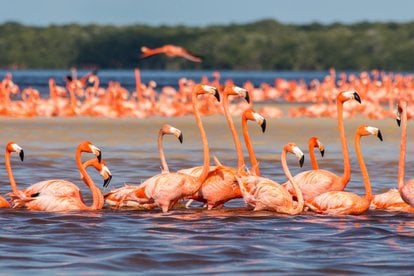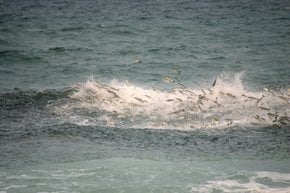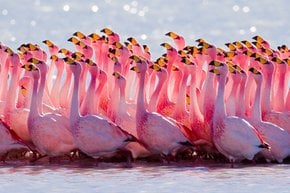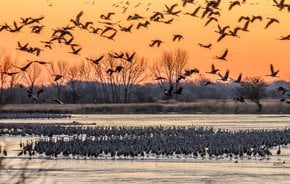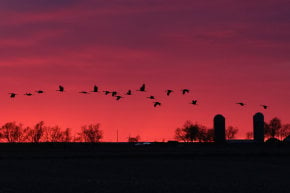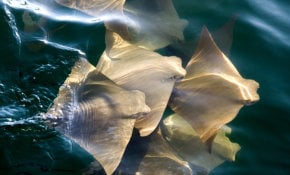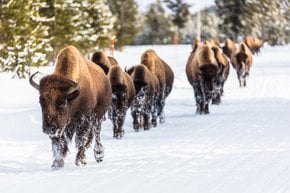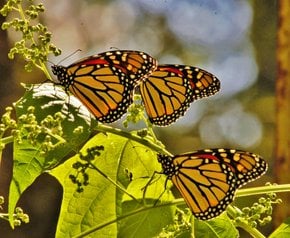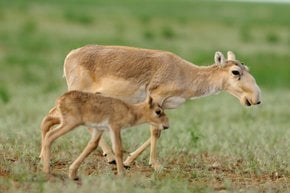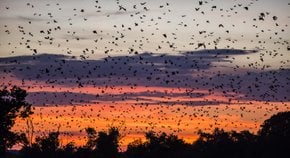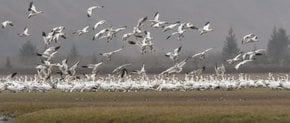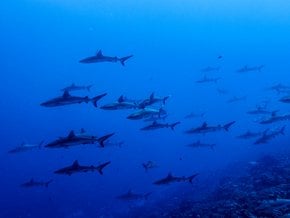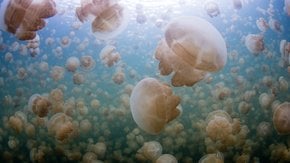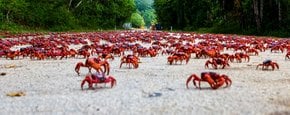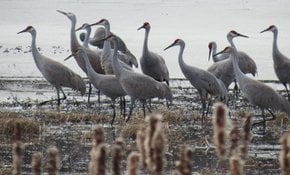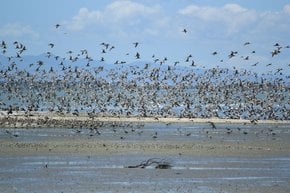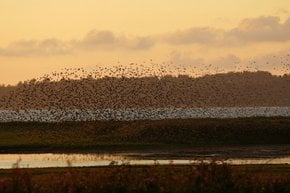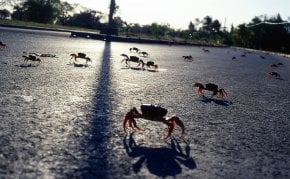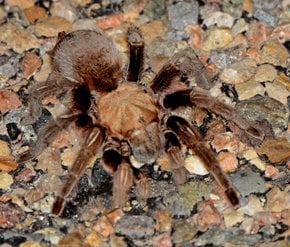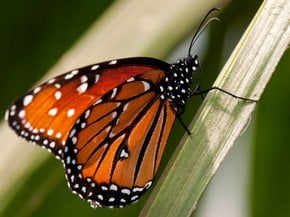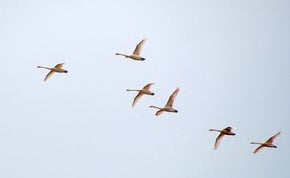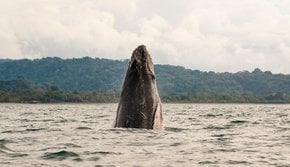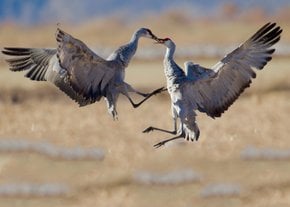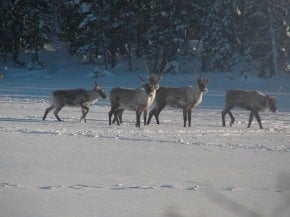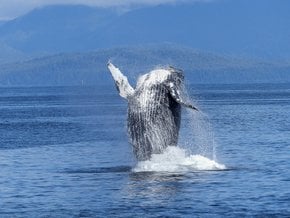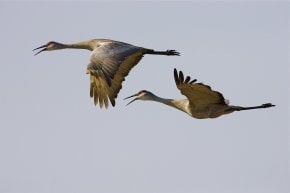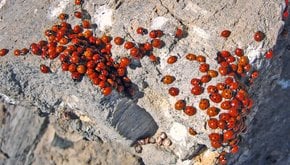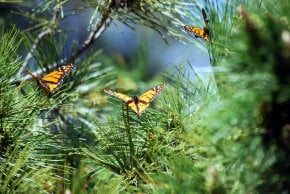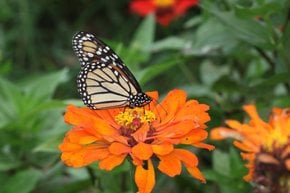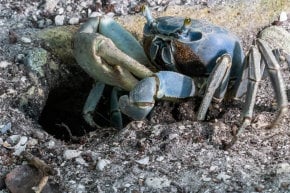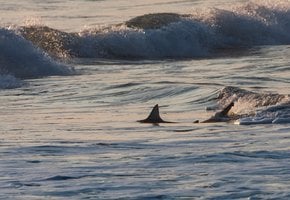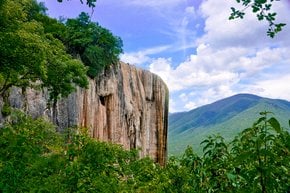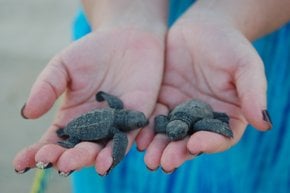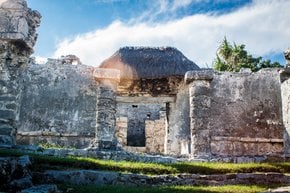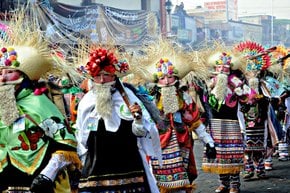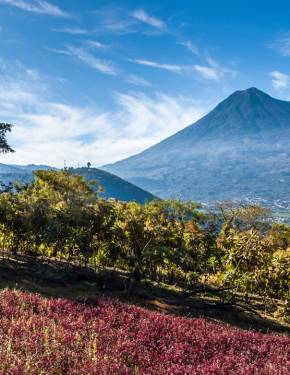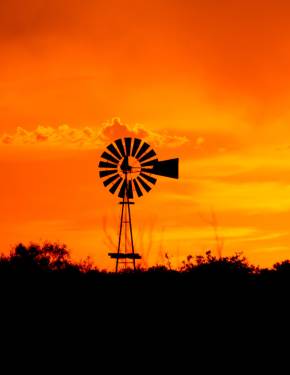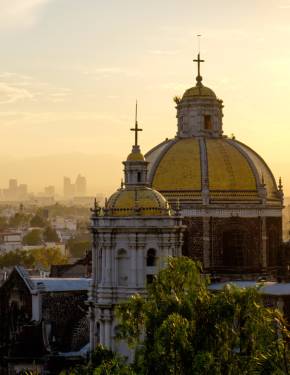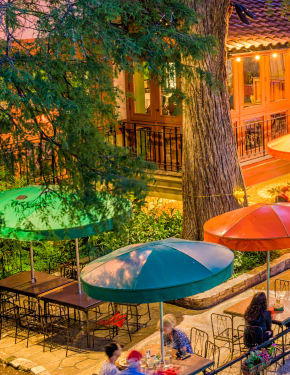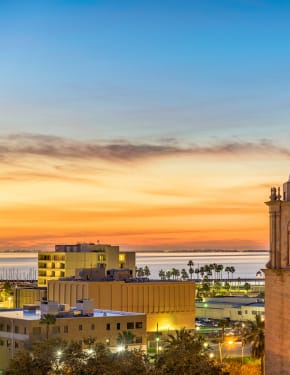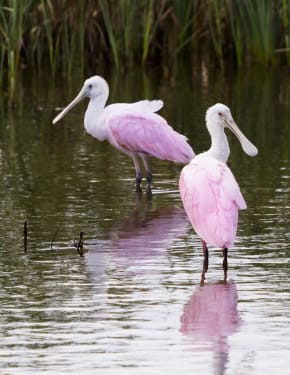Flamingos in Mexico 2025-2026
About 40,000 flamingos gather in one place to bring up their chicks
Best time: April–July | November–February
Yucatan peninsula is home to tens of thousands of flamingos year-round. Endemic to North America, Caribbean Flamingo, aka American Flamingo, is the largest of flamingo species. American flamingo is also known for its bright pink plumage and highly social behavior. The best areas to meet flamingos in Mexico are the Ria Celestun Biosphere Reserve and the Ria Lagartos Biosphere Reserve.
The Ria Celestun Biosphere Reserve (November-February)
The Ria Celestun Biosphere Reserve, with its extensive mangrove wetlands, is a favorite mating ground for flamingos. Up to 30,000 birds congregate in the Celestun Biosphere Reserve between November and February to breed. The American flamingo is monogamous, and long-term pairs are often formed. Celestun Reserve is an excellent place to observe flamingo courtship rituals. Usually, a female initiates mating, walking by the male, and if he is interested, they walk in unison and make synchronous movements with their heads up.
The birds in the colonies tend to stick together, and the views are really splendid. However, please take into account that flamingos are extremely shy, so it's better to stay at a distance in order not to scare them off. Binoculars and cameras with good zoom will be really useful!
How to get to Celestun
Celestun is located an hour and a half drive from Merida. You can drive there by car, take a bus, or take a boat tour from Merida. Once you arrive in the small village of Celestun, you'll need to take a boat tour to explore the lagoon and see flamingoes anyway. A tour from Merida costs about $120.
The Rio Lagartos Biosphere Reserve (April-July)
After mating, flamingos move to the high-saline waters of the protected Río Lagartas Biosphere Reserve to nest, rest, and feed their chicks. American flamingo lays a single white egg on a mud mound. Incubation is about one month. The chicks are born white, and both parents brood their young.
Best time to see flamingo
Rio Lagartos has flamingos year-round, but between April and July, you can see the highest numbers and you can also spot the chicks. However, some restrictions are enforced during the brooding season on how close you can get to the birds. June is considered to be the best time for flamingo viewing in Río Lagartos, with plenty of birds close to the shore. July and August are quite busy months with thicker crowds of tourists. Flamingos remain on their nesting ground until autumn and then fly back to Celestun. September and October are the priciest months since the flamingos are further away from the embankment, which means a longer and costlier boat ride to reach them.
Río Lagartos Biosphere Reserve Tours
Río Lagartos Biosphere Reserve is located about 65 miles (105km) north of Valladolid. Rio Lagartos means “alligator river" and is best explored by boat. Plenty of operators offer flamingo-watching tours in the Biosphere Reserve, both by boat and by land. Land tours are usually cheaper than boat tours, which last 3-6 hours and cost from $80 to $140. Land tours last from 2 hours and are priced between $60 and $90. In addition to flamingos, you can see ospreys, frigate birds, great blue herons, and alligators.

